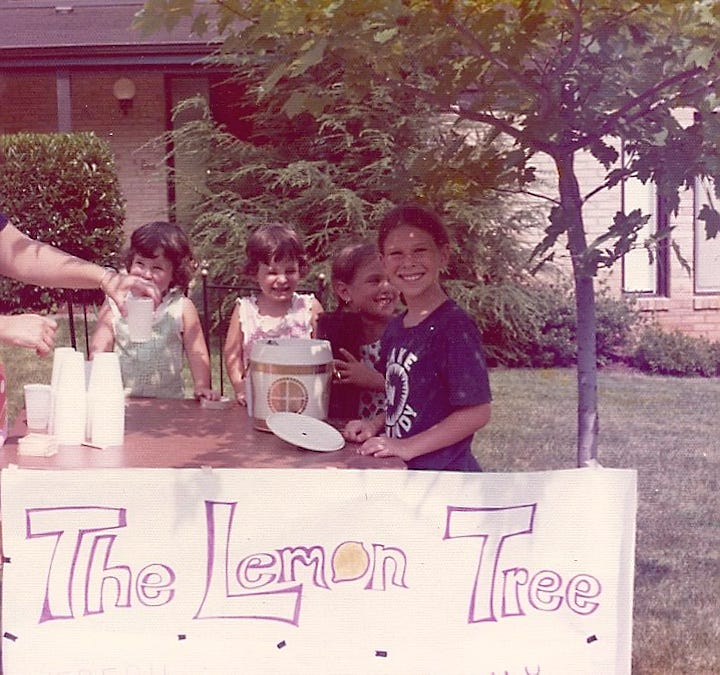Moving vans and thwarted plans
Since leaving college, I've moved 18 times within 3 different countries. Most were forced. All were stressful. But this move, combining two families under one roof, was both different and revelatory.
It has been said—note the passive voice—that the five biggest stressors in life are 1) the death of a family member; 2) divorce or relational rupture; 3) major illness or injury; 4) losing one’s job; and 5) moving. Like some of you, I’ve experienced all of these, sometimes a couple of them simultaneously. In fact, a few times these adverse life events fell one on top of the other in groups of threes or fours: a veritable stress cascade which, in turn, put my body at greater risk for disease.
But today I specifically want to talk about that last stressor, moving. Boxing up one life to begin another is a task with which I’ve become all-too-well acquainted. Since graduating college thirty-seven years ago—when I moved first to Paris then to Moscow then back to the States—I’ve moved eighteen times. That’s an average of one move every two years, which, as a healthy, stress-free life path, I do not recommend. Neither would my children, who’ve had to bear the brunt of both these frequent displacements as well as their parents’ separation and subsequent divorce, which led to even more boxes and bubble wrap and upheaval.
Some of these moves were due to outrageous rent hikes. Others were because our family was either expanding or contracting. Others were forced upon us by landlords who suddenly announced they wanted to sell or to reclaim their properties for themselves in a country with minimal tenants’ rights not to be displaced at the end of a two-year lease. (France, Germany, and Spain, for example, offer multi-year or open-ended leases. And tenants can leave anytime with three-months notice.)
All of this has been pretty chaotic and unsettling. And I feel a frequent ache of guilt for not providing my children with the stability of a permanent family home. The kind they can return to again and again. The kind my parents bought back in 1971, when I was 5, my sister was 3, and my baby twin sisters were still in utero. That home still stands. It has outlived my father by nearly two decades, and my 82-year-old mother still lives there.

Of course, the dream of a family home or any kind of home ownership in America—normally a rite of passage into adulthood—has become more and more elusive for every American, not just for me and my children. Just ask any white-collar, middle-class millennial or elder Gen-Z trying to break into the housing market today. The math is simple: the monthly carrying costs of a home are often greater than most monthly incomes. Add in the cost of childcare, medical expenses, children’s college tuitions, and, well, these days eggs, and you’re stuck, as I was, at the whim of landlords. As a recent Newsweek poll noted, “Two-thirds of Americans believe that current housing prices are making the dream of home ownership beyond the reach of the middle class.”
So what are the other middle-class Americans who actually own their own homes doing to achieve this elusive American dream? 36% of millennial and younger homebuyers now rely on family help to cover down payments, up from 18% in 2019. In other words, the accumulation of generational wealth—money from the pockets of these homebuyers’ parents and grandparents—is responsible for helping purchase more than one third of all homes in the U.S., creating an even greater divide between the haves and have-nots.
I’ve been mulling over all of this—not just the insanity of today’s housing market but also my four adult decades of displacement, illness, relational ruptures, and psychic repair—as as I sit here in the early dawn hours on the couch in my new living room, surrounded by moving boxes yet again, forbidden to lift them for the next three days because of a new biopsy (not cancer, the portal just told me, thank goodness), while periodically checking in on America’s descent into financial ruin and tyranny, which will make it even harder for anyone to afford a home, college, medical care, or retirement.
I suddenly wondered: who said moving is one of the five big life stressors, and what was the scientific basis for these assertions?
Turns out, these beliefs derive from the Holmes And Rahe Stress Scale, which was first devised in 1967 and named the Social Readjustment Rating Scale. This scale, cataloguing 43 life events which were found to predict the onset of illness, was revised in 2023 to better reflect the current state of living as a human being under late stage capitalism and to remove some of its sexist bias. To wit: “Taking on a mortgage greater than $10,000” (hahahahahahahahaha!!!!) was changed to simply “Taking on a mortgage or loan for a major purchase.” Similarly, “Wife begins or stops work” was changed to “Spouse or life partner begins or stops working.”
Also? I was somewhat surprised to learn that moving sits pretty low down the long list, earning an LCU (life change unit) of only 20 points, whereas the death of a spouse gets 100, divorce gets 73, a major illness gets 53, and losing a job gets 47.
Duly noted. But also, in my experience, the degree of stress of a move really depends on the reason for the move. When the rent on my once-home in Harlem spiked from $3500 a month to nearly $5000, just as I was getting separated, paying for college, losing my health insurance, and dealing with multiple health issues, that was stressful. When my landlord in Williamsburg, Brooklyn suddenly decided he wanted to reclaim his apartment during the lethal height of the pre-vaccine pandemic, just as I was getting ready to launch a book into the world while starting to notice various cracks in my post-divorce relationship, that was also extremely stressful.
But the move I just did last Saturday, combining my family with my partner’s, while it might have been logistically complicated, it wasn’t particularly stressful emotionally. In fact, it was revelatory on multiple unexpected levels. (Because the rest of this will become quite personal, I’m going to put up a paywall. Health and medical stories will always remain free for all subscribers.)
Keep reading with a 7-day free trial
Subscribe to Ladyparts to keep reading this post and get 7 days of free access to the full post archives.






